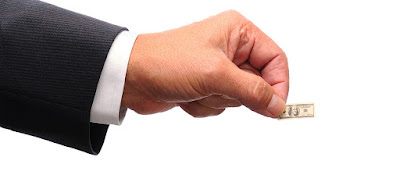Let's Talk about Inflation - Banking Info for Exams
What is 'Inflation'
Inflation is the rate at which the general level of prices for goods and services is rising and, consequently, the purchasing power of currency is falling. It's an economics term that means you have to spend more to fill your gas tank, buy a gallon of milk or get a haircut. Inflation increases your cost of living.How Central Banks Manage Inflation
Central banks throughout the world use monetary policy to avoid inflation and its opposite deflation. In the United States, the Fed aims for a target inflation rate of 2 percent year-over-year. It uses the core inflation rate that removes energy and food prices. Those prices are set by commodities traders and are too volatile to take into consideration.As a result of inflation, the purchasing power of a unit of currency falls. For example, if the inflation rate is 2%, then a pack of gum that costs $1 in a given year will cost $1.02 the next year. As goods and services require more money to purchase, the implicit value of that money falls.
The Federal Reserve uses core inflation data, which excludes volatile industries such as food and energy prices. External factors can influence prices on these types of goods, which does not necessarily reflect the overall rate of inflation. Removing these industries from inflation data paints a much more accurate picture of the state of inflation.
The Fed's monetary policy goals include moderate long-term interest rates, price stability and maximum employment, and each of these goals is intended to promote a stable financial environment. The Federal Reserve clearly communicates long-term inflation goals in order to keep a steady long-term rate of inflation, which in turn maintains price stability. Price stability, or a relatively constant level of inflation, allows businesses to plan for the future, since they know what to expect. It also allows the Fed to promote maximum employment, which is determined by nonmonetary factors that fluctuate over time and are therefore subject to change. For this reason, the Fed doesn't set a specific goal for maximum employment, and it is largely determined by members' assessments. Maximum employment does not mean zero unemployment, as at any given time people there is a certain level of volatility as people vacate and start new jobs.
Types of Inflation
Modern economic theory describes three types of inflation:- (1) Cost-push inflation is due to wage increases that cause businesses to raise prices to cover higher labor costs, which leads to demand for still higher wages (the wage-price spiral)
- (2) Demand-pull inflation results from increasing consumer demand financed by easier availability of credit.
- (3) Monetary inflation caused by the expansion in money supply (due to printing of more money by a government to cover its deficits).
Examples of Inflation and Hyperinflation
Today, few currencies are fully backed by gold or silver. Since most world currencies are fiat money, the money supply could increase rapidly for political reasons, resulting in inflation. The most famous example is the hyperinflation that struck the German Weimar Republic in the early 1920s. The nations that had been victorious in World War I demanded reparations from Germany, which could not be paid in German paper currency, as this was of suspect value due to government borrowing. Germany attempted to print paper notes, buy foreign currency with them, and use that to pay their debts.This policy led to the rapid devaluation of the German mark, and with it, hyperinflation. German consumers exacerbated the cycle by trying to spend their money as fast as possible, expecting that it would be worth less and less the longer they waited. More and more money flooded the economy, and its value plummeted to the point where people would paper their walls with the practically worthless bills. Similar situations have occurred in Peru in 1990 and Zimbabwe in 2007-2008.



Comments
Post a Comment